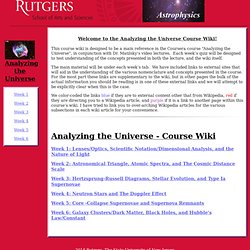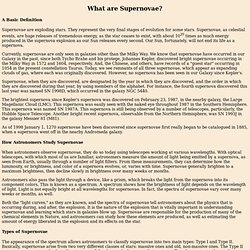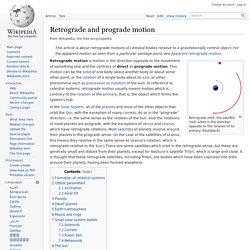

Mach 1000 Shock Wave Lights Supernova Remnant. When a star explodes as a supernova, it shines brightly for a few weeks or months before fading away. Yet the material blasted outward from the explosion still glows hundreds or thousands of years later, forming a picturesque supernova remnant. What powers such long-lived brilliance? In the case of Tycho's supernova remnant, astronomers have discovered that a reverse shock wave racing inward at Mach 1000 (1000 times the speed of sound) is heating the remnant and causing it to emit X-ray light.
"We wouldn't be able to study ancient supernova remnants without a reverse shock to light them up," says Hiroya Yamaguchi, who conducted this research at the Harvard-Smithsonian Center for Astrophysics (CfA). Tycho's supernova was witnessed by astronomer Tycho Brahe in 1572. Modern astronomers know that the event Tycho and others observed was a Type Ia supernova, caused by the explosion of a white dwarf star. "Thanks to the reverse shock, Tycho's supernova keeps on giving," says Smith. Supernova Remnants. A supernova remnant (SNR) is the remains of a supernova explosion.

SNRs are extremely important for understanding our galaxy. They heat up the interstellar medium, distribute heavy elements throughout the galaxy, and accelerate cosmic rays. How do we Classify Supernova Remnants? Shell-type remnants: The Cygnus Loop (above left) is an example of a shell-type remnant. Crab-like remnants: These remnants are also called pulsar wind nebulae or plerions, and they look more like a "blob" than a "ring," in contrast to the shell-like remnants. Composite Remnants. Analyzing the Universe Course Wiki. Welcome to the Analyzing the Universe Course Wiki!

This course wiki is designed to be a main reference in the Coursera course “Analyzing the Universe”, in conjunction with Dr. Matilsky’s video lectures. Each week’s quiz will be designed to test understanding of the concepts presented in both the lecture, and the wiki itself. The main material will be under each week’s tab. We have included links to external sites that will aid in the understanding of the various nomenclature and concepts presented in the course. We color-coded the links blue if they are to external content other that from Wikipedia, red if they are directing you to a Wikipedia article, and purple if it is a link to another page within this course’s wiki.
Week 1: Lenses/Optics, Scientific Notation/Dimensional Analysis, and the Nature of Light Week 2: Astronomical Triangle, Atomic Spectra, and The Cosmic Distance Scale Week 3: Hertzsprung-Russell Diagrams, Stellar Evolution, and Type Ia Supernovae. Supernova Remnant. A supernova remnant (SNR) is a diffuse, expanding nebula that results from a supernova explosion.

They are categorised into three main types based on their appearance, with the differences arising due to variations in initial progenitor and explosion conditions, density variations in the interstellar medium (ISM) and Rayleigh-Taylor instabilities. The SNR consists of material ejected in the supernova explosion itself, as well as other interstellar material that has been swept up by the passage of the shock wave from the exploded star. Although not necessarily visible at optical wavelengths, SNRs tend to be powerful X-ray and radio emitters due to interactions with the surrounding ISM. They typically last several hundred thousand years before dispersing into the ISM, during which time they evolve through 3 main stages: What are Supernovae? A Basic Definition Supernovae are exploding stars.

They represent the very final stages of evolution for some stars. Supernovae, as celestial events, are huge releases of tremendous energy, as the star ceases to exist, with about 1020 times as much energy produced in the supernova explosion as our Sun releases every second. Our Sun, fortunately, will not end its life as a supernova. Currently, supernovae are only seen in galaxies other than the Milky Way.
Planetary Orbit Simulator - Planetary Orbits. Retrograde and prograde motion. This article is about retrograde motions of celestial bodies relative to a gravitationally central object.

For the apparent motion as seen from a particular vantage point, see Apparent retrograde motion. Retrograde orbit: the satellite (red) orbits in the direction opposite to the rotation of its primary (blue/black) Formation of celestial systems[edit] When a galaxy or a planetary system forms, its material takes the shape of a disk. Most of the material orbits and rotates in one direction. Orbital parameters[edit] Inclination[edit] Axial tilt[edit] Planets[edit] Rotating Sky Explorer - The Rotating Sky. Heliacal Rising Simulator. Demonstrates how the day of the year when a star is first visible in the morning (the heliacal rising) depends on the observer's latitude and the star's position on the celestial sphere.

Running this animation on your computer... right-click to download heliacalrisingsim.swf and heliacalrisingsim.html to the same directory open the html file in a browser to run the animation Linking to this animation... copy and paste the code below into your webpage or blog: Putting this animation on your website... upload heliacalrisingsim.swf to the same directory as your webpage copy and paste the following code into your webpage: